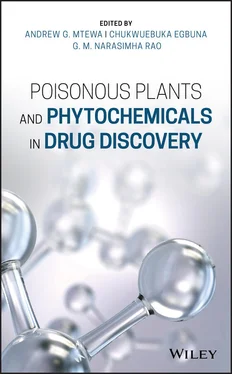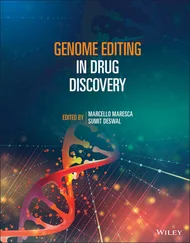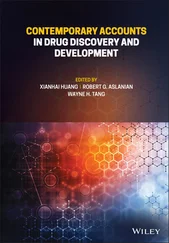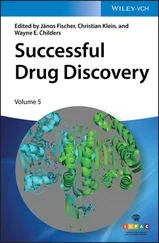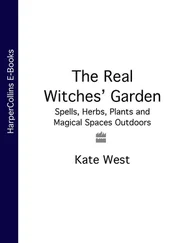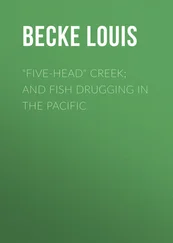Chukwuebuka EgbunaChukwuebuka Egbuna is a chartered chemist, chemical analyst, and academic researcher. He is a member of the Institute of Chartered Chemists of Nigeria, the Nigerian Society of Biochemistry and Molecular Biology, the Society of Quality Assurance (USA), and the Royal Society of Chemistry (UK). He has been engaged in several roles at New Divine Favor Pharmaceutical Industry Limited, Akuzor Nkpor, Anambra State, Nigeria, and Chukwuemeka Odumegwu Ojukwu University (COOU) in Nigeria. He has worked collaboratively and published a number of research articles in phytochemistry, nutrition, toxicology, and related areas. He is a reviewer and editorial board member of various journals, including serving as a website administrator for the Tropical Journal of Applied Natural Sciences , a journal of the Faculty of Natural Sciences, COOU, and as a toxicology advisory board member for Cambridge Scholar Publishing. His primary research interests are in phytochemistry, nutrition and toxicology, food and medicinal chemistry, and analytical biochemistry. He obtained his BSc and MSc degrees in biochemistry at COOU and is presently a PhD fellow in Nutritional Biochemistry and Toxicology with the World Bank Africa Centre of Excellence for Public Health and Toxicological Research (ACE‐PUTOR), University of Port‐Harcourt, Rivers State, Nigeria.
G.M. Narasimha RaoG.M. Narasimha Rao is an Assistant Professor of Botany at Andhra University, India. He holds an MSc, MPhil, and PhD in Botany. He has worked on marine algae and mangroves, ecology, physiology, and chemical studies for many years and sits on the editorial board of Marine Science . He has vast teaching and research experience gained over many years and has published extensively in his field of research.
1 Historical Use of Toxic Plants
Godwin Anywar
Department of Plant Sciences, Microbiology & Biotechnology, College of Natural Sciences, Makerere University, Kampala, Uganda
1 1.1 Introduction to Toxic Plants
2 1.2 Poisonous Plants as Sources of Traditional and Modern Medicines
3 1.3 Toxic Plants and Justice1.3.1 Toxic Plants in Capital Punishment 1.3.2 Trial by Ordeal
4 1.4 Toxic Plants in Poisoned Weapons 1.4.1 Arrow Poisons
5 1.5 Plant Fishing Poisons/Piscicides/Ichthyotoxins
6 1.6 Poisonous Plants as Food
7 1.7 Poisonous Plants as Biopesticides
8 1.8 Toxic Psychoactive Plants for Recreational and Religious Purposes
9 1.9 Poisonous Plants in Warfare and Bioterrorism
10 1.10 Poisonous Plants as Carcinogens and Teratogen
11 1.11 Conclusion
1.1 Introduction to Toxic Plants
Numerous poisonous plants exist in our environment and have been the subject of great speculation, study, and concern. Poisonous plants have been used as food, medicines, agents for crime, means of dispensing justice, capital punishment, suicide, bioterrorism, fishing poisons, and for recreational and spiritual purposes as hallucinogens or psychoactive agents. Such plants can cause a wide range of adverse effects when ingested by animals or people, depending on the organ system affected [1, 2].
Plant toxicity is due to a wide diversity of chemical toxins [1–3]. Certain plant species have multiple toxins with the ability to affect different systems [2]. Other less studied forms of toxicity of plant compounds, such as those that manifest as subacute and chronic types in the form of carcinogens, teratogens, endocrine disruptors, and genotoxic compounds, are difficult to attribute to specific plants or their compounds [4]. The toxicity of different plant species is dependent on the susceptibility of the organism in question, the growth stage or part of the plant ingested, the amount consumed, and the species [2]. In the same vein, the observed effects of ingestion of toxic plants range from mild forms to those that result in death after ingestion of even very small quantities. Additionally, there are only a few plant toxins with antidotes, with most other poisoning cases managed symptomatically [1]. The good news is that antidotes are rarely necessary when managing poisonings by plant toxins in patients [5].
This chapter looks at some notable examples of widely studied toxic plants but is by no means exhaustive. Even among the widely studied examples, there is incomplete toxicity information [6–8]. The chapter introduces the reader to numerous general aspects of toxic plants. Toxic plants are of great economic importance in the livestock industry but also pose a threat to the health of humans and domestic animals, which are often exposed to the same toxic plants because of a shared environment. Various toxic compounds from plants such as those used in arrow and dart poisons could prove valuable for drug discovery and research [9].
1.2 Poisonous Plants as Sources of Traditional and Modern Medicines
Traditional medicine has been the source of several modern drugs. Many well‐known poisonous plants are widely used in traditional medicine and are a source of life‐saving drugs [3, 9]. Nature produces a variety of toxic compounds, many of which have found applications as anticancer drugs [10]. The same toxic compounds can serve as therapeutic compounds depending on the dose administered. This fact is well articulated in Paracelsus’ dictum, which states that only the dose determines that a thing is not a poison [3]. Table 1.1shows some common poisonous plants from which modern drugs have been obtained.
Several toxic compounds from plants belong to several classes of compounds, including alkaloids, glycosides, flavonoids, proteins, and saponins [1, 3, 25]. Most saponins can cause hemolysis of erythrocytes at doses of only a few milligrams per milliliter but may also have other toxic properties. Saponin‐containing plants are extensively used as fishing poisons. Alkaloids have extraordinary structural diversity and a wide variety of pharmacological activities, such as muscle relaxants and cardiovascular and respiratory agents [2, 3]. They belong to the most powerful plant constituents and are responsible for the activity of a host of poison ingredients. Flavonoids, which have a wide structural variety, show a broad range of activities but are rarely used as a primary source of toxicity for mammals, except for several compounds of special structure such as rotenoids, which are used for fish poisoning [3].
Table 1.1 Some common drugs derived from toxic plants.
| Name of plant |
Toxic principles/drug(s) derived |
Use of drug |
| Strychnos spp. |
Strychnine |
Neuropharmacological science [11] |
| Strophanthus spp. |
Ouabain |
Acute cardiac insufficiency [12, 13] |
| Strophanthus spp. |
k‐Strophanthin |
Acute cardiac insufficiency/cardiotonic research [12, 13] |
| Physostigma venenosum |
Physostigmine |
Glaucoma and myasthenia gravis [14, 15] |
| Chondrodendron tomentosum |
D‐Tubocurarine |
Muscle relaxant in anesthesia [14, 16] |
| Rauwolfia serpentina |
Reserpine (Serpalan and Serpasil) |
Antihypertensive and psychotropic [17, 18] |
| Rauwolfia vomitoria |
Ajmaline |
Cardiac arrhythmias [19] |
| Catharanthus roseus |
Ajmaline |
Cardiac arrhythmias [19] |
| Vincristine |
Pediatric malignancies, acute lymphocytic leukemia, lymphoid blast crisis of chronic myeloid leukemia, and both Hodgkin’s and non‐Hodgkin’s lymphomas [14] |
| Digitalis purpurea |
Digitoxin |
Tachyarrhythmia [14] |
| Taxus brevifolia |
Taxol (docetaxel/Taxotere) |
Ovarian, breast, and colon cancers and Kaposi's sarcoma [20] |
| Colchicum autumnale |
Colchicine |
Gout [21]; familial Mediterranean fever [22] |
| Melilotus officinalis / Melilotus albus |
Dicoumarol (warfarin) |
Thrombotic conditions [23] |
| Camptotheca acuminata |
Camptothecin |
Anticancer [20] |
| Podophyllum emodi/Podophyllum peltatum |
Podophyllotoxin |
Anticancer [5, 24] |
| Papaver somniferum |
Morphine |
Analgesic [14] |
| Erythroxylum coca |
Cocaine (benzoylmethylecgonine) |
Local anesthetic [14] |
| Atropa belladonna Datura stramonium Hyoscyamus niger Hyoscyamus muticus |
Scopolamine |
Prevention of motion sickness and postoperative nausea and vomiting; parkinsonism; ophthalmic treatment [14] |
Almost all the active ingredients of African arrow poison come from plants. At least 80% of the poisons are based on cardioactive components, mostly cardiac glycosides from the genera Acokanthera , Parquetina , and Strophanthus . Other genera with numerous poisonous species are Adenium, Mansonia, Calotropis, Pergularia, Corchorus, Erythrophleum, Euphorbia, Gnidia , and Jatropha [3]. Many other plant toxins used have a variety of activities, but their toxic effects are more long term than acute, e.g. sesquiterpene lactones, iridoids, pyrrolizidine alkaloids, and tannins. Some alkaloid‐bearing plants that are used as base poisons include Strychnos spp., Boophone disticha , Crinum spp., Triclisia dictyophylla , Nicotiana spp., Physostigma venenosum , Sarcocephalus latifolius , and Erythrophleum spp. [3, 26].
Читать дальше
